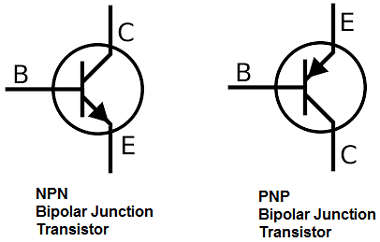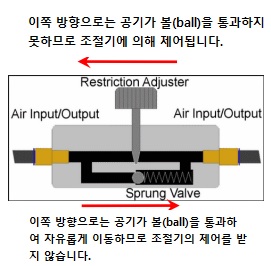[주식] 코스피 200 커버드콜 ETF와 인버스를 활용한 헷지 전략
1. 개요
코스피 200 커버드콜 ETF를 활용한 투자 전략에서 인버스 ETF를 이용한 헷지를 고려해볼 수 있습니다. 이 글에서는 커버드콜 ETF의 델타를 구하고, 괴리율과 배당수익률을 고려한 최적의 헷지 비율을 계산하는 방법을 정리하겠습니다.
2. 기본 개념 정리
2.1 커버드콜 ETF
- 옵션을 활용하여 프리미엄을 추가로 획득하는 ETF
- 상승장에서 수익이 제한되지만, 하락장에서 일정 부분 방어 가능
- 월 배당 지급 가능
2.2 인버스 ETF
- 기초지수(코스피 200)의 하락에 베팅하는 ETF
- 일반적으로 코스피 200과 역의 움직임을 가짐
- 커버드콜 ETF의 하락 리스크를 헷지하는 용도로 활용 가능
3. 데이터 및 변수 설정
3.1 기본 데이터 (2025년 3월 14일 기준)
- 커버드콜 ETF: 1주 가격 = 8,435원, 괴리율 = -0.07%
- 인버스 ETF: 1주 가격 = 5,010원, 괴리율 = +0.04%
- 커버드콜 ETF 월 배당금: 60원
3.2 배당수익률 계산
연간 배당금은 다음과 같습니다: 배당수익률은 다음과 같이 계산됩니다:
4. 헷지 비율 계산
4.1 기본 델타 값 기반 헷지 비율
커버드콜 ETF의 델타(Δ)는 일반적으로 0.75로 가정할 수 있습니다. 헷지 비율은 다음과 같습니다:
4.2 괴리율을 고려한 보정
괴리율을 반영하여 조정된 헷지 비율은 다음과 같이 계산됩니다:
5. 회귀 분석을 통한 델타 추정
과거 데이터를 활용하여 커버드콜 ETF의 델타를 추정할 수도 있습니다. 예제 데이터는 다음과 같습니다:
| 코스피 200 등락률 (%) | 커버드콜 ETF 등락률 (%) |
|---|---|
| 0.5 | 0.4 |
| -0.3 | -0.2 |
| 0.7 | 0.6 |
| -0.2 | -0.1 |
| 0.6 | 0.5 |
회귀 분석을 수행하면 델타(기울기 값)는 약 0.80로 추정됩니다. 이를 적용한 헷지 비율은: 괴리율을 고려하면:
6. Python 및 R 코드
6.1 Python 코드
import numpy as np
import statsmodels.api as sm
covered_call_price = 8435
covered_call_premium = -0.07 / 100
dividend_per_month = 60
dividends_per_year = dividend_per_month * 12
dividend_yield = (dividends_per_year / covered_call_price) * 100
inverse_price = 5010
inverse_premium = 0.04 / 100
covered_call_delta = 0.75
hedge_ratio = (covered_call_delta * covered_call_price) / inverse_price
adjusted_hedge_ratio = hedge_ratio * (1 + covered_call_premium - inverse_premium)
print(f"배당수익률: {dividend_yield:.2f}%")
print(f"기본 헤지 비율: {hedge_ratio:.4f}")
print(f"괴리율 보정 후 헤지 비율: {adjusted_hedge_ratio:.4f}")
kospi_returns = np.array([0.5, -0.3, 0.7, -0.2, 0.6])
covered_call_returns = np.array([0.4, -0.2, 0.6, -0.1, 0.5])
X = sm.add_constant(kospi_returns)
model = sm.OLS(covered_call_returns, X).fit()
estimated_delta = model.params[1]
hedge_ratio_regression = (estimated_delta * covered_call_price) / inverse_price
adjusted_hedge_ratio_regression = hedge_ratio_regression * (1 + covered_call_premium - inverse_premium)
print(f"회귀 분석으로 추정한 델타: {estimated_delta:.4f}")
print(f"회귀 분석 기반 헤지 비율: {hedge_ratio_regression:.4f}")
print(f"괴리율 보정 후 회귀 분석 헤지 비율: {adjusted_hedge_ratio_regression:.4f}")
6.2 R 코드
# 데이터 및 변수 정의
covered_call_price <- 8435
covered_call_premium <- -0.07 / 100
dividend_per_month <- 60
dividends_per_year <- dividend_per_month * 12
dividend_yield <- (dividends_per_year / covered_call_price) * 100
inverse_price <- 5010
inverse_premium <- 0.04 / 100
covered_call_delta <- 0.75
hedge_ratio <- (covered_call_delta * covered_call_price) / inverse_price
adjusted_hedge_ratio <- hedge_ratio * (1 + covered_call_premium - inverse_premium)
cat(sprintf("배당수익률: %.2f%%\n", dividend_yield))
cat(sprintf("기본 헤지 비율: %.4f\n", hedge_ratio))
cat(sprintf("괴리율 보정 후 헤지 비율: %.4f\n", adjusted_hedge_ratio))
# 회귀 분석을 이용한 델타 추정
kospi_returns <- c(0.5, -0.3, 0.7, -0.2, 0.6)
covered_call_returns <- c(0.4, -0.2, 0.6, -0.1, 0.5)
model <- lm(covered_call_returns ~ kospi_returns)
estimated_delta <- coef(model)[2]
hedge_ratio_regression <- (estimated_delta * covered_call_price) / inverse_price
adjusted_hedge_ratio_regression <- hedge_ratio_regression * (1 + covered_call_premium - inverse_premium)
cat(sprintf("회귀 분석으로 추정한 델타: %.4f\n", estimated_delta))
cat(sprintf("회귀 분석 기반 헤지 비율: %.4f\n", hedge_ratio_regression))
cat(sprintf("괴리율 보정 후 회귀 분석 헤지 비율: %.4f\n", adjusted_hedge_ratio_regression))
7. 결론
커버드콜 ETF와 인버스 ETF를 조합하면 안정적인 현금 흐름과 리스크 헷지를 동시에 고려할 수 있습니다. 위의 계산 및 코드를 활용하여 본인의 투자 전략에 맞게 조정해보시기 바랍니다.








댓글
댓글 쓰기